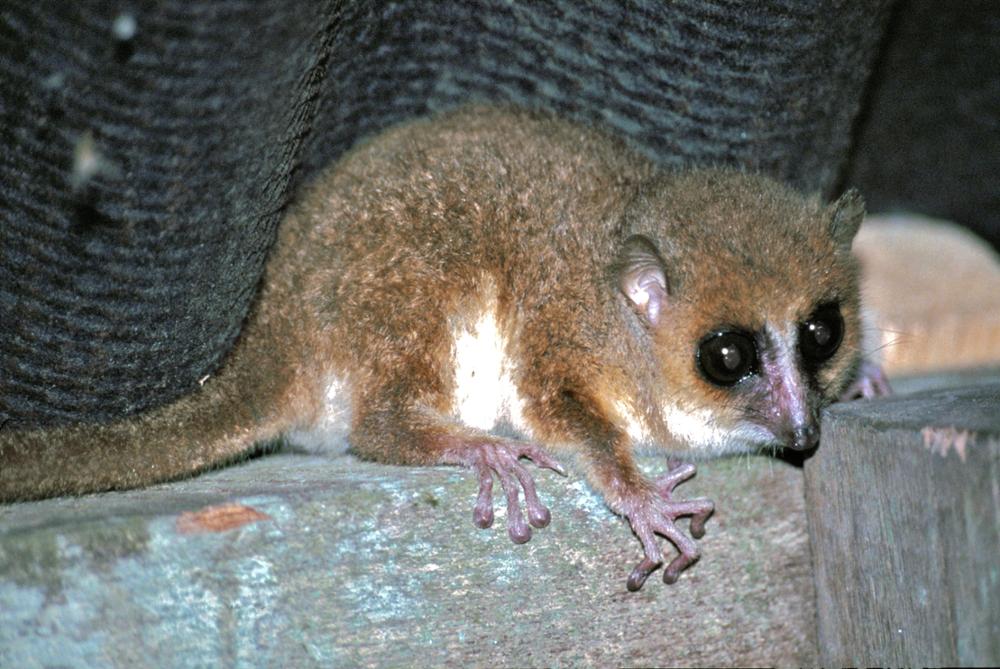
Microcebus: A tiny wonder of nature!
Microcebus, the genus that includes the world’s smallest lemurs, are also the smallest primates on the planet. Measuring about 12 cm in length with a tail of nearly 15 cm, these creatures are truly remarkable.
These animals are so difficult to spot (hard to find in the forest) and study that new species are still being discovered. Their biological and genetic peculiarities continue to amaze scientists and may hold the key to new scientific breakthroughs!
However, these tiny lemurs are endangered as their habitat is steadily being degraded by human activity. Let’s get to know this tiny marvel of nature, endemic to Madagascar!

A primate the size of a mouse!
Microcebus lemurs weigh a maximum of 90 grams and are about the size of a large mouse. They have large eyes with highly sensitive retinas. Their ears (size varies by species) are also very sensitive, enabling them to detect prey from several meters away. Their diet consists of insects, as well as fruits, nectar, and honey. These “micro-primates” are solitary when feeding.
They are nocturnal, making them even harder to observe. During the day, they sleep in small groups (males sleep alone) in tree hollows or nests made of leaves. These groups consist of about 15 individuals within an area of 700 m² to 2 hectares.
Microcebus mark their territory by urinating on their hands and feet, leaving a scent trail as they move. Their breeding season is between September and October, with offspring (2 to 4 per female) born in November or December after a gestation period of 59 to 62 days. Males rarely show aggression unless in captivity.
What’s most astonishing is that these are primates despite their tiny size! Scientists study them for insights that may have applications for humans. Notably, microcebus can enter a state of "torpor," a form of dormancy.
A primate that hibernates (Almost!)
These tiny lemurs have fat tails, a way to store energy and draw upon it during periods of food scarcity, particularly in winter (the dry season in Madagascar). However, they do not fully hibernate, as they don’t stay in this state long enough.
They curl up in a ball and slow down their metabolism (reducing their body temperature to as low as 7°C) to conserve energy. They can voluntarily return their body temperature to normal at any time to search for food.
The duration of dormancy depends on habitat and sex. Females, for instance, experience several weeks to up to five months of torpor in the Kirindy Forest (southwestern Madagascar). Males never remain dormant for more than a few days and always wake up before females to establish hierarchy.
Are there more species yet to be discovered?
The most common species of microcebus are the gray-brown mouse lemur (Microcebus griseorufus)—found in deciduous dry forests of the north and west and thorn bushes in the south—and the red mouse lemur (*Microcebus rufus*), found in the humid, dense forests of the east.

The Microcebus genus includes 24 species, with the most notable distributed as follows:
In northwest Madagascar :
- Danfoss mouse lemur (Microcebus danfossi)
- Bongolava mouse lemur (Microcebus bongolavensis)
- Lokobe mouse lemur (Microcebus lokobensis, Lokobe Reserve)
- Claire’s mouse lemur (Microcebus mamiratra, Lokobe Reserve)
- Ravelobe mouse lemur (Microcebus ravelobensis, forest near Lake Ravelobe)
- Northern red mouse lemur (Microcebus tavaratra, Ankarana Special Reserve)
In the northeast and east:
- Mittermeier's mouse lemur (Microcebus mittermeieri)
- Sambirano mouse lemur (Microcebus sambiranensis)
- Simmons’ mouse lemur (Microcebus simmonsi)
- Lehilahytsara mouse lemur (Microcebus lehilahytsara, Andasibe-Mantadia National Park)
In the south:
- Jolly's mouse lemur (Microcebus jollyae)
- Madame Berthe’s mouse lemur (Microcebus berthae, Kirindy Forest)
Three new species were discovered in 2016:
- Ganzhorn's mouse lemur (Microcebus ganzhorni), found in southeastern Madagascar
- Manitatra mouse lemur (Microcebus manitatra), found in western Madagascar
- Boraha mouse lemur (Microcebus boraha), named after its place of origin, Sainte-Marie or Nosy Boraha in Malagasy
An endangered species?
The main predators of microcebus are birds of prey and large snakes, which is a natural part of their ecosystem. These tiny lemurs will survive unless humans completely destroy their habitat.
The Microcebus gerpi is critically endangered in eastern Madagascar. The Gerpi Project, conducted in Anjahamana, Andobo, Sahafiana, and north of Anivorano Est, aims to conserve this species.
It can be said that all management and conservation projects within protected areas where microcebus live contribute to their preservation. If climate threats were the only challenge, microcebus would likely adapt due to their extraordinary resilience!
Naturalists hypothesize that microcebus represents the most archaic surviving form of all primates. However, some suggest that these lemurs evolved into miniature forms due to their isolated habitat—after all, Madagascar is almost a continent unto itself! In any case, microcebus is truly impressive !